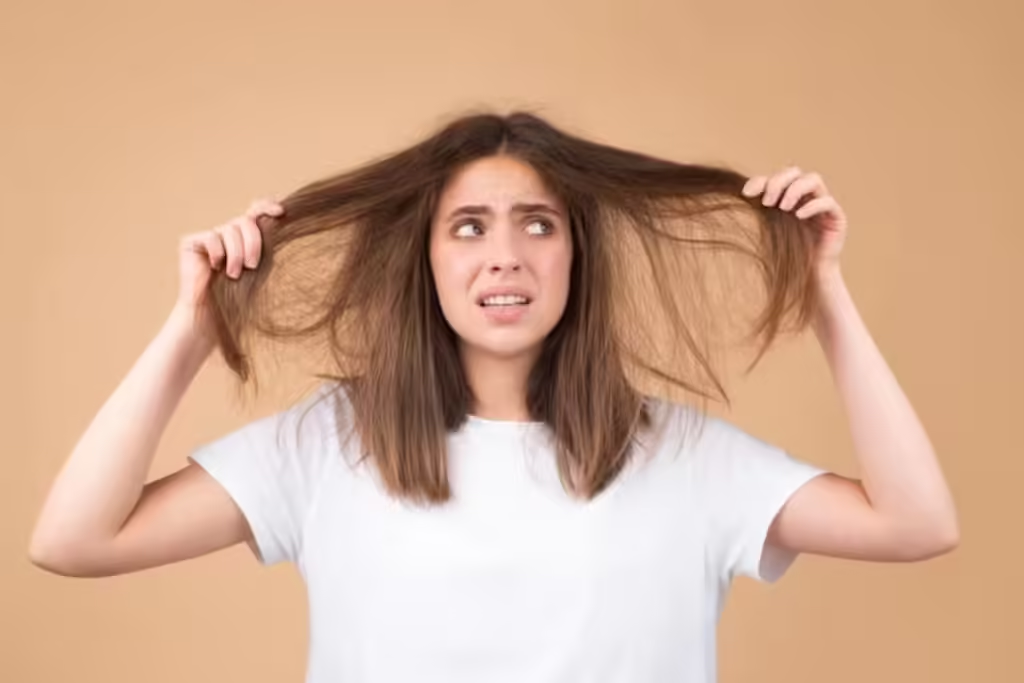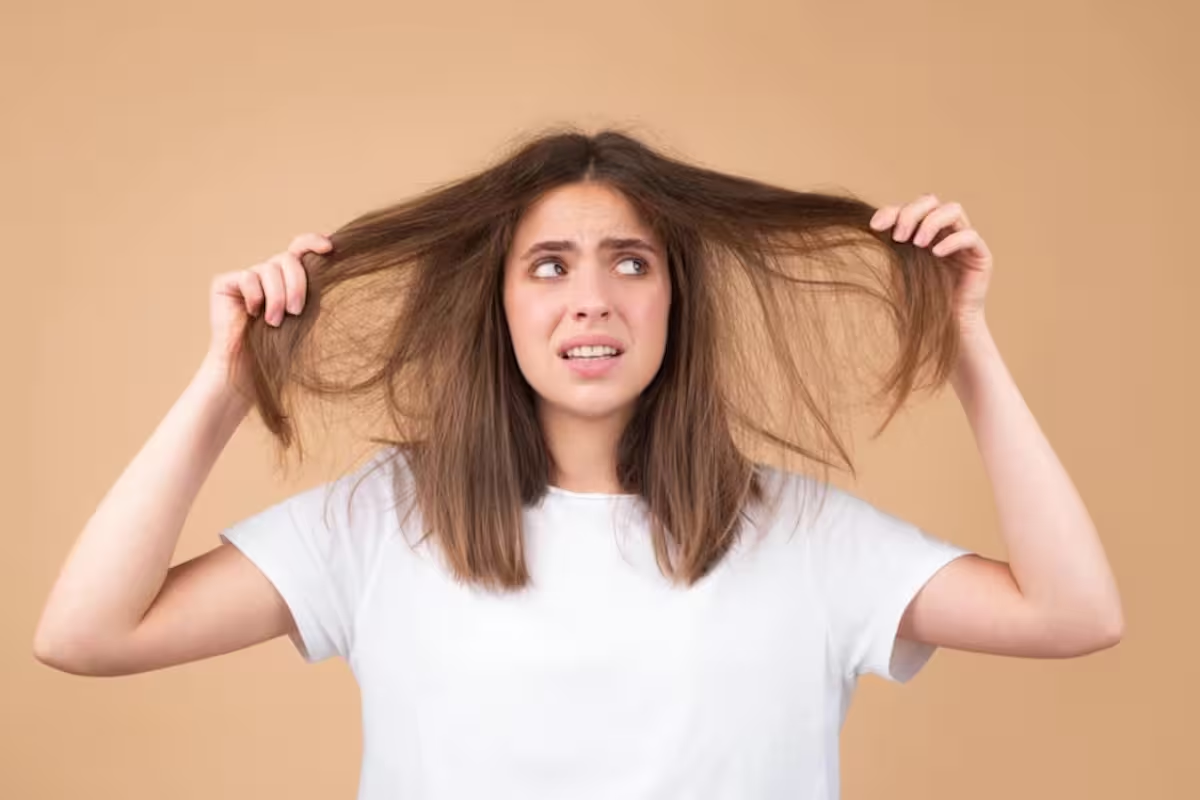Pollution and Scalp Health: Causes, Effects, and Solutions
In the bustling urban landscapes of today, pollution has emerged as a significant environmental concern that affects not only our respiratory health but also the well-being of our skin—including the often-overlooked scalp. While much attention is rightly given to the impact of pollution on facial skin, the scalp, covered by hair, is equally susceptible to the adverse effects of environmental pollutants. This article explores the causes, effects, and solutions related to pollution and scalp health, providing insights into how pollution can affect the scalp and offering practical solutions to maintain a healthy scalp despite exposure to urban pollutants.

Understanding Pollution and Its Impact on the Scalp
Pollution encompasses a range of harmful substances, including particulate matter (PM), ozone (O3), volatile organic compounds (VOCs), and heavy metals. These pollutants are released from various sources such as vehicle emissions, industrial activities, and airborne dust. When exposed to the scalp, these pollutants can accumulate on the skin’s surface, potentially penetrating the hair follicles and disrupting scalp health.
Causes of Scalp Pollution
1. Airborne Particles
Fine particulate matter (PM2.5 and PM10) and other airborne particles settle on the scalp, clogging pores and compromising the scalp’s ability to breathe. This accumulation can lead to scalp irritation, inflammation, and sensitivity.
2. Oxidative Stress
Pollution-induced oxidative stress occurs when pollutants generate free radicals in the scalp. Free radicals are unstable molecules that damage cellular structures, including scalp tissues and hair follicles. This damage can weaken hair roots, leading to hair thinning, breakage, and loss.
3. Impaired Scalp Barrier Function
Similar to facial skin, the scalp has a natural barrier function that protects against external aggressors. Pollution can disrupt this barrier by altering the scalp’s pH balance and depleting essential lipids. A compromised scalp barrier is more susceptible to irritation, dryness, and scalp conditions such as dandruff and eczema.
Effects of Pollution on Scalp Health
1. Scalp Irritation and Sensitivity
Exposure to pollutants can cause scalp irritation, itching, and sensitivity. Individuals with sensitive skin or existing scalp conditions may experience exacerbated symptoms, leading to discomfort and inflammation.
2. Hair Quality and Growth
Pollution can affect hair quality by weakening hair follicles and impairing the scalp’s ability to support healthy hair growth. As pollutants accumulate, they can hinder nutrient absorption and oxygen supply to the hair follicles, resulting in dull, brittle hair prone to breakage.
3. Scalp Conditions
Prolonged exposure to pollutants can contribute to the development or worsening of scalp conditions such as dandruff, seborrheic dermatitis, and scalp acne. Pollutants disrupt the scalp’s microbiome, creating an environment conducive to fungal or bacterial infections.
Solutions for Maintaining a Healthy Scalp in Polluted Environments
1. Regular Cleansing
Effective scalp cleansing is crucial for removing pollutants, excess oil, and impurities that accumulate throughout the day. Use a gentle shampoo formulated for your scalp type to cleanse thoroughly without stripping away natural oils.
2. Antioxidant Protection
Incorporate scalp care products enriched with antioxidants such as vitamin E, vitamin C, and green tea extract. These antioxidants help neutralize free radicals, reduce oxidative stress, and protect the scalp from environmental damage.
3. Barrier Repair
Strengthen the scalp’s natural barrier with products containing ingredients like ceramides, fatty acids, and panthenol. These ingredients replenish moisture, restore lipid balance, and enhance scalp resilience against pollution-induced stressors.
4. Scalp Massage and Exfoliation
Promote scalp circulation and remove buildup by gently massaging the scalp during shampooing. Use a scalp scrub or exfoliating treatment once a week to eliminate dead skin cells, product residue, and pollutants that can clog follicles.
5. Protective Hairstyles
Wearing hats or scarves when outdoors can minimize direct exposure of the scalp to pollutants and UV radiation, reducing the risk of damage and sensitivity.
6. Healthy Diet and Hydration
Maintain a balanced diet rich in vitamins, minerals, and antioxidants to support scalp health from within. Drink plenty of water to stay hydrated, which helps flush out toxins and maintain scalp moisture balance.
7. Avoid Smoking and Secondhand Smoke
Smoking and exposure to secondhand smoke can exacerbate scalp and hair issues. Avoid smoking and environments where tobacco smoke is prevalent to protect scalp health.
Pollution-Proof Skincare Routine
Conclusion
Protecting the scalp from pollution is essential for maintaining overall scalp health and promoting healthy hair growth. By understanding the causes and effects of pollution on the scalp, and implementing targeted solutions such as regular cleansing, antioxidant protection, barrier repair, scalp massage, and protective measures, individuals can minimize the impact of environmental pollutants. With a consistent and proactive approach to scalp care, it is possible to nurture a healthy scalp environment that supports strong, vibrant hair despite the challenges posed by urban pollution.








Leave a reply